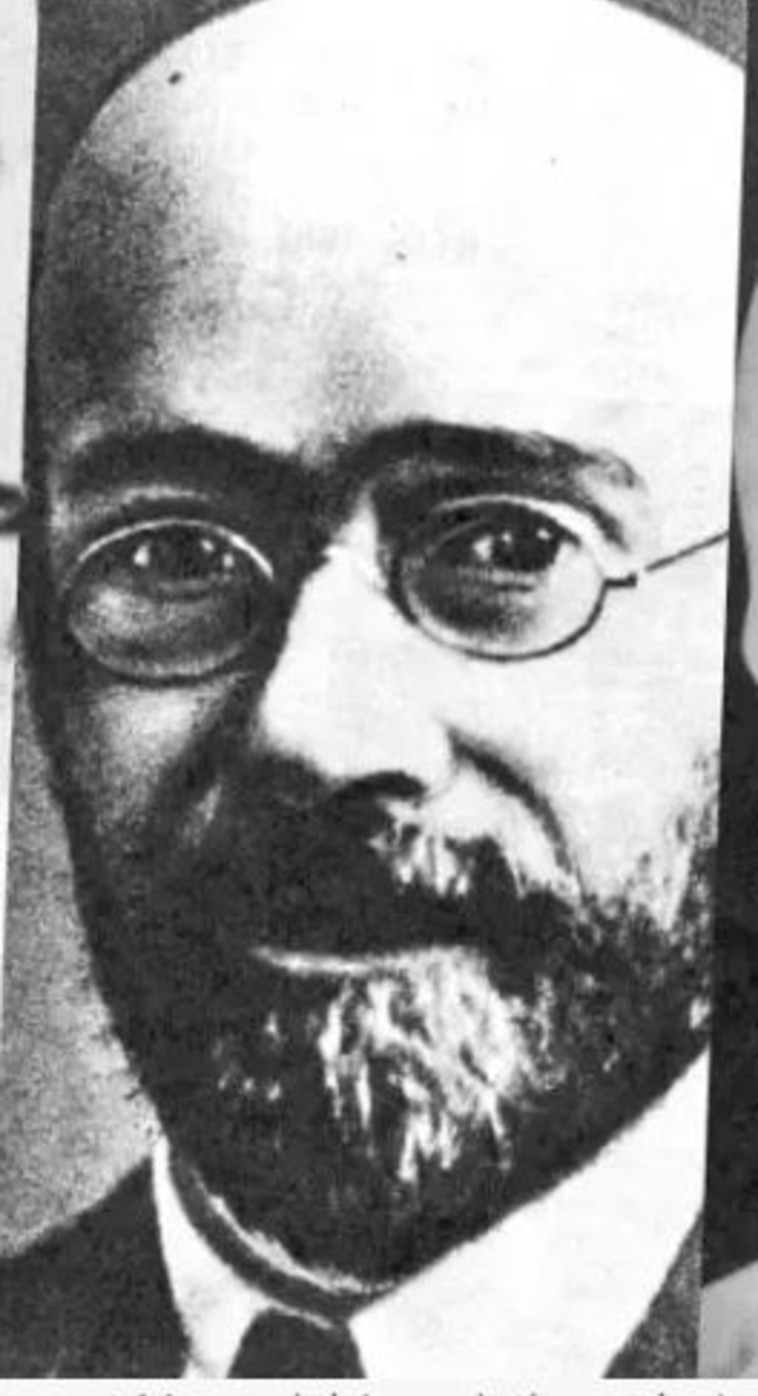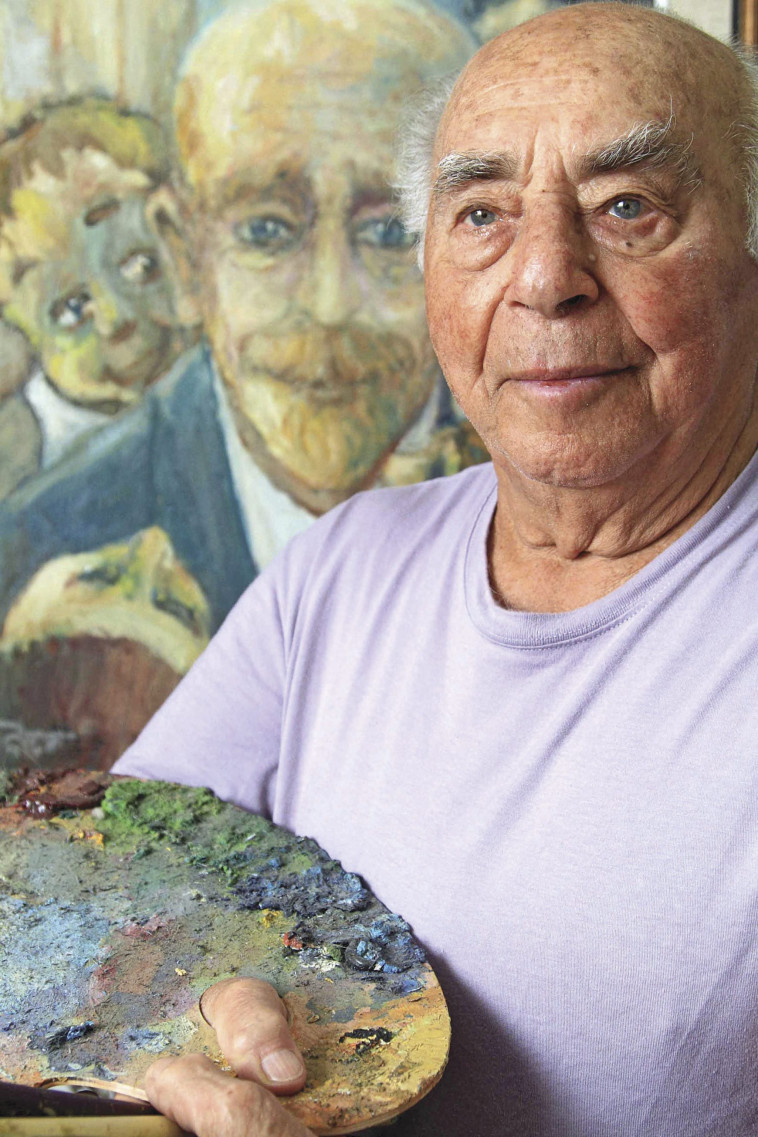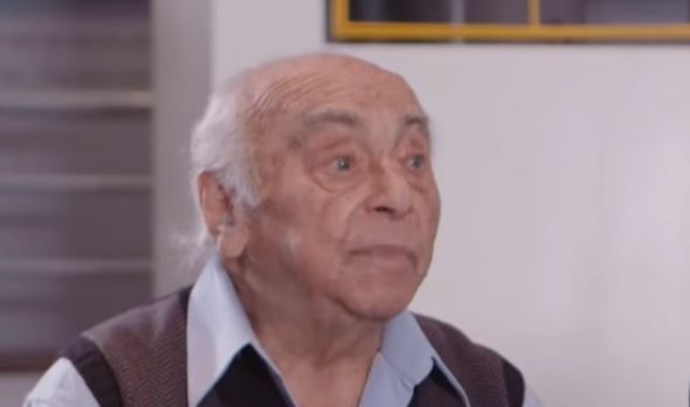“Usually when we talk about the Holocaust, we first mention the adults at that time,” he protested. “Somehow the kids are pushed into stories since then, as in life, even though what happened to them was beyond tragic.” These words of protest were told to me in an interview with Maariv nearly seven years ago by the Tel Aviv painter and sculptor Yitzhak Belfer, who is considered the last child to survive from Janusz Korczak’s orphanage, on the occasion of the launch and a book of his works. Belfer passed away yesterday at the age of 98, seven days and a creation, much of which he dedicated to commemorating his revered, Dr. Henrik Goldschmidt, who was fixed in consciousness by the pen name of Janusz Korczak.
In his story, Belfer first goes back to the same day, sometime in 1930, when he was privileged to reach Korczak’s children’s kingdom. Earlier, his father Dying died of pneumonia and left his family in poverty and deprivation. When his widow was faced with the possibility of handing over one of her six children to the orphanage, she chose her Yitzhakla.
“Mom dressed me in holiday clothes and said ‘going to a new house,'” he recalled. “When we got to the orphanage, at 92 Krochmalna Street, Korczak greeted us in a tiny room with only two chairs. Mom sat on one of them and he sat me on his lap. At first I felt uncomfortable when I had to hug him to sit steady. While talking to “Mother, I was fascinated by the man’s face. His face, with the little golden beard and his good blue eyes. They looked at me through his glasses, fascinated me. At the end of a boy I stroked his beard to see if he was real …”.
 Janusz Korczak (Photo: Swedish Holocaust Memorial Association)
Janusz Korczak (Photo: Swedish Holocaust Memorial Association)Following that encounter, his life changed: “I moved from a religious home and the room where I studied to something completely different, with independent thought, complete freedom and mutual help. Every child who came there was assigned a bigger child. ‘If you do a bad deed, he will receive the punishment,’ warned the doctor. “As we called Korczak, who was a pediatrician and a writer. The mentor, Yossi, was his name, took me to bathe and gave me clothes. That’s how I became a new child.”
On the way to breakfast, the doctor was waiting for him with fish oil. “Thanks to him, you will grow up to be healthy and strong,” Korczak assured him, demonstrating to him how to put into his mouth the repulsive drink in one “sip” while blocking his nose.
“I quickly got to know Stefa there, she is Stefania Wilczynska, the housekeeper and a unique woman,” he said. “At the age of 26 she returned from higher education in Belgium and Switzerland and joined Korczak in setting up the orphanage. Stefa loved us, the children, but because she was busy, she caressed and hugged us less than him. The two complemented each other in an unusual way. While he was the intellectual and thinker Opinions, Stefa was the woman of action at home. “
During Belfer’s stay at the orphanage, the two visited Eretz Israel separately, and when they returned from it, they instilled in the children more love for her. “Stefa was a heroine,” he said of Ness. “In fact, she immigrated to Israel in 1938 and joined Kibbutz Ein Harod, where she had visited before, but in May ’39, when the winds of war were blowing, she felt the need to return to Korczak and the children’s republic he had established.
“Indeed, we lived there in a kind of republic of our own where the various matters at home were discussed. We, the children, participated in the works and served the food. We had a weekly newspaper, for which Korczak would write the opening article and a class for helpful pastimes, including dominoes, chess, checkers and tennis. “The children in the class would take care of the games for all the children in the house and replace the books in the library. The shifts, including the court rulings, were written on the bulletin board.”
 Yitzhak Belfer (Photo: Eli Desa)
Yitzhak Belfer (Photo: Eli Desa)Court?! I wondered.
“It was an institution designed to resolve conflicts between the children, but we could also sue the adults at home,” he replied with a smile. “Once, when one of the adults shouted at me and accused me of an act I did not do, I, a tiny miss and trembling with fear, said to him out of knowledge of my right – ‘Sir, you shouted at me unjustly and I am submitting you to trial!’ “That was the case. The judges were five children against whom no complaint was filed during the week. Korczak advocated the complete self-leadership of the children.”
Was his appearance serious? – I was intrigued.
“Not always,” he replied. “When we had a childhood reunion, he used to gather us for games. One of our favorites was ‘The Train.’
“Korczak’s room was in the attic, far away from us,” Belfer added. “When he saw that the boy was not well and he was stressed, Korczak would lead him by the hand there. There was a military bed, a large table and a library in the room. The window full of the wall stood out. Through it he could overlook Warsaw, which he loved very much and of course the orphanage. “Where he would see the children playing. One of the square windows was open to the birds he used to feed. Such was Korczak, the man who loved not only children but also simplicity and nature.”
“With the adults he drove differently,” he remarked. “He was suspicious of them and did not like their behavior so much, perhaps out of a thought that they were not seeking the best interests of the child. For Korczak, loving a child also meant understanding him and sharing with him.”
In ’37, when he reached the age of 14, the age at which the children ended their stay in the orphanage, he had to separate. But Stefa offered to write to the Children’s Council a request to approve him to be there for another year, based on the difficult financial situation in his family. That same year he worked as an apprentice in a factory for assembling radio receivers. After work he would organize games for the children and help in the dining room. At the end of the year he returned to his mother, to whom he would transfer his wages from the factory.
“When World War I broke out, the world turned upside down,” he testified. “The factory where I worked closed. The ‘Balbats’ (homeowners) disappeared. There was almost no food. The Germans soon entered Warsaw in a victory parade. They immediately issued restrictions and began persecuting the Jews. We were forbidden to enter parks and take trams. We were charged very quickly. Wear a white ribbon with a blue Star of David on the right arm.
“When my mother saw that I was risking my search for food, and all sorts of things like that, she offered me to flee to Russia. I talked to Isaac, also a Korczak trainee, to flee the ghetto. On the way we went to the orphanage, to say goodbye to the doctor. We found him surrounded by children. “Like a good father, he pulled out some money and gave us an apology that he no longer has. That’s how we survived while Korczak and the children were taken to extermination in 1942.”
Belfer and his friend went farther east, to the depths of Russia. He first worked in the Pem mines, in the Ural Mountains and then enlisted in the Soviet army as a driver of a weapons factory. After the war he returned to ruined Warsaw. “I went straight to 92 Krochmalna Street,” he said. “I found the orphanage standing on its pedestal, except for Korczak’s room which was destroyed in the bombings. When I saw Polish children playing in our yard, I had no heart to enter.”
Belfer left for Israel on the illegal immigration ship “Nevertheless.” British warships stopped her and after a stormy battle, exiled her illegal immigrants to a year and a half of exile in Cyprus, where the young illegal immigrant Belfer decorated the cultural and sports clubs, and learned sculpture from the renowned sculptor Zeev Ben-Zvi. He did not forget the tumultuous parent who danced following the declaration of the establishment of the state all his days.
In Israel, he studied at the Avni Institute, where he adhered to the realistic style and met his wife, Shoshana, a member of a family from Morocco. Only after his studies at the institute did the Holocaust begin to be present in his paintings. “I have no restraints and I paint everything, including the crematoria, everything I fortunately did not experience then,” the artist testified that his family members were murdered in the Holocaust.
In the past, he refused to exhibit in Germany until he softened and even agreed to place a monument to Korczak in the city of the tyrant Mengele. With Poland he had a hard time. “I only go there when they invite me,” he clarified. “For me, Poland is one big cemetery …”.
What would have happened to Korczak had it not been for the Holocaust? – His questions towards the end.
“His big dream was to immigrate to Israel and as a writer to continue writing in it, especially about characters from the Bible,” he replied.
Before we parted, I asked Belfer one last question: How should we see Korczak today?
He replied without thinking twice: “Doctor Korczak was the Jewish genius of the twentieth century in the field of pedagogy and practical education, who created a new method of education. Unfortunately it is not applied today.”
